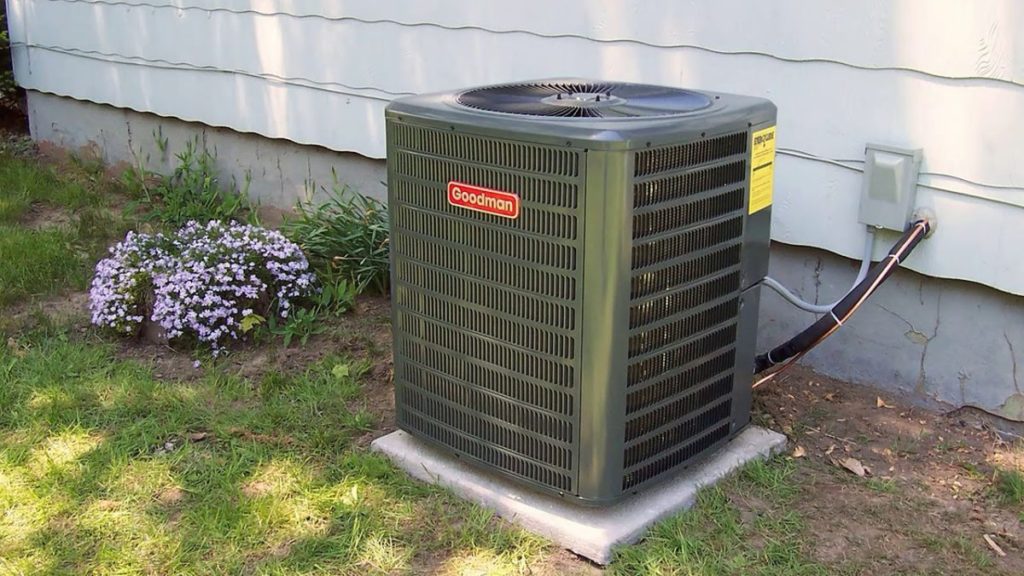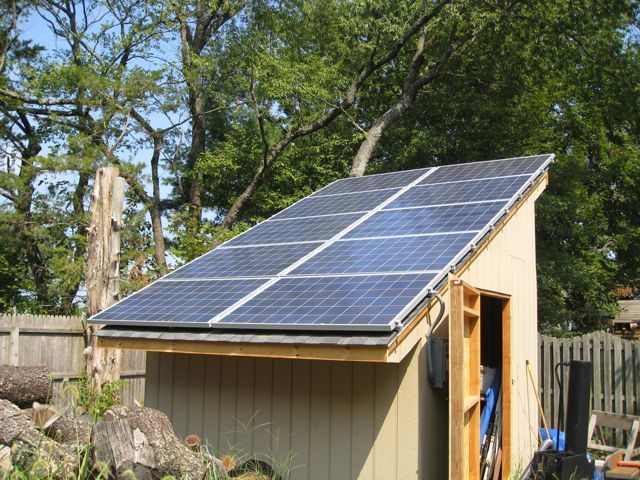Living off the grid in hot climates can be challenging due to extreme heat and humidity.
However, with the right cooling technologies, it is possible to stay comfortable and thrive in these harsh conditions.
We will explore the top cooling technologies for off-grid living in hot climates, including evaporative coolers, passive design techniques, and advanced thermal management systems.
Whether you’re looking to build a new home or retrofit an existing one, these cutting-edge technologies can help you stay cool and comfortable while minimizing your carbon footprint.
Let’s dive in and explore the possibilities!
Evaporative coolers
Also known as swamp coolers, these devices use evaporation to cool the air. They are relatively inexpensive, energy-efficient, and well-suited for hot, dry climates.
Instead of using refrigerants like traditional air conditioners, evaporative coolers harness the power of evaporation to cool the air.
Here’s how it works
First, hot air is drawn into the unit and passed through a wet pad or mesh.
As the air passes through the wet surface, it causes the water to evaporate, which in turn cools the air.
The cooled air is then blown into your home or office, providing a refreshing and comfortable cooling effect.
One of the key benefits of evaporative coolers is their energy efficiency.
Unlike traditional air conditioners, which use a lot of electricity to cool the air, evaporative coolers rely on the natural process of evaporation to do the cooling work.
This means that they consume less energy and can save you money on your utility bills.
Evaporative coolers are relatively inexpensive to purchase and maintain, making them a cost-effective cooling solution.
They are energy-efficient, inexpensive, and well-suited for hot climates.
If you’re looking for a cooling solution that’s both effective and environmentally friendly, consider an evaporative cooler for your cooling needs.
Solar cooling systems
These systems use solar power to drive a cooling process, such as absorption chillers or adsorption chillers. They are environmentally friendly, renewable, and can be more cost-effective than traditional cooling systems.
Solar-powered cooling systems offer a sustainable and cost-effective alternative to traditional cooling methods.
These systems use solar energy to drive a cooling process, such as absorption chillers or adsorption chillers, which are environmentally friendly and renewable.
Absorption chillers use heat from the sun to vaporize a refrigerant, while adsorption chillers use heat to adsorb a refrigerant onto a surface.
Both processes involve the use of a heat exchanger, evaporator, and condenser to transfer heat and cool the air or water.
The benefits of solar-powered cooling systems are numerous.
For one, they are environmentally friendly and do not produce any greenhouse gas emissions, making them a sustainable option for buildings and homes.
They can be more cost-effective than traditional cooling systems, as they do not rely on non-renewable energy sources like fossil fuels.
In fact, a study by the International Energy Agency found that solar cooling systems can be up to 70% more cost-effective than traditional systems in certain regions.
Furthermore, solar-powered cooling systems can increase the energy efficiency of a building, as they can be integrated with other renewable energy systems like solar panels and wind turbines.
Overall, solar-powered cooling systems offer a sustainable and cost-effective alternative to traditional cooling methods.
Their environmentally friendly design and potential cost savings make them an attractive option for buildings and homes looking to reduce their carbon footprint and energy costs.
Geothermal cooling
This involves using the constant temperature of the earth to cool a building. A system of pipes is buried underground, and a liquid is pumped through the pipes to absorb heat from the earth and cool the building.
Using the constant temperature of the earth to cool a building is a highly effective and eco-friendly approach that utilizes a system of buried pipes and a liquid to absorb heat from the earth and provide cooling.
This ground source cooling system works by circulating a specialized liquid through a network of underground pipes, which takes advantage of the earth’s constant temperature to transfer heat from the building to the cooler soil.
As the liquid flows through the pipes, it absorbs heat from the building and transfers it to the earth, cooling the building in the process.
This method can achieve up to 70% energy savings compared to traditional air conditioning systems, while also providing a more stable and consistent temperature.
The buried pipes require minimal land use and can be easily integrated into existing landscapes, making it an ideal solution for those looking to reduce their environmental footprint.
Greenhouses
A greenhouse can be used to cool a building by taking advantage of the natural temperature and humidity control provided by the greenhouse effect. This is a passive cooling method that can be very effective in hot climates.
A greenhouse can be a powerful tool for cooling buildings in hot climates, harnessing the natural temperature and humidity control provided by the greenhouse effect.
This passive cooling method can be highly effective and energy-efficient, particularly when compared to conventional air conditioning systems.
By carefully designing the greenhouse’s layout and materials, the building’s internal temperature can be stabilized and maintained at a comfortable level, even on the hottest days.
This is achieved through a process of natural convection and evapotranspiration, where warm air is circulated and cooled by water evaporation from plants and surfaces.
In addition, the greenhouse effect can also help to regulate humidity levels, which can further improve the building’s thermal comfort.
By leveraging the principles of passive design, buildings can be cooled sustainably and with minimal environmental impact, making greenhouses an attractive solution for hot climates.
Earth sheltered homes
These homes are built into hillsides or trenches, providing natural insulation and cooling through earth mass. They can be more energy-efficient and comfortable than traditional above-ground homes.
Building homes into hillsides or trenches not only provides natural insulation and cooling, but also offers numerous benefits that can make them more energy-efficient and comfortable than traditional above-ground homes.
By utilizing the earth’s natural mass as a thermal buffer, these homes are able to maintain a consistent temperature, requiring less energy to heat and cool.
The earth’s natural cooling effects can be leveraged to provide a cooler interior space during the warmer months, while the earth’s natural insulation properties help to retain heat during the colder months.
This results in a more stable and comfortable indoor climate, reducing the need for artificial heating and cooling systems.
Furthermore, the earth’s natural insulation and cooling properties can also help to reduce noise pollution, providing a quieter and more peaceful living environment.
By incorporating these features into home design, homeowners can enjoy a more sustainable, comfortable, and peaceful living space.
Natural ventilation
This involves using windows, vents, and other openings to allow cooler air to enter the building and hot air to escape. Natural ventilation can be an effective cooling method in hot climates, especially when combined with shading and insulation.
Using windows, vents, and other openings to allow cooler air to enter the building and hot air to escape is an effective cooling method in hot climates.
By leveraging natural ventilation, buildings can maintain a comfortable indoor temperature while minimizing the use of mechanical cooling systems.
This approach is particularly useful in regions with low humidity and gentle winds, where natural ventilation can be relied upon to provide sufficient air flow.
In addition to improving indoor comfort, natural ventilation can also help to reduce energy costs by minimizing the need for air conditioning.
By combining natural ventilation with shading and insulation, buildings can maintain a consistent temperature throughout the day, even during the hottest months of the year.
Night-time cooling
In hot climates, the temperature can drop significantly at night. By opening windows and doors at night to allow cool air to enter, and closing them during the day to prevent heat gain, night-time cooling can be an effective way to reduce the need for mechanical cooling.
Night-time cooling is a simple yet effective technique for reducing the need for mechanical cooling in hot climates.
By opening windows and doors at night to allow cool air to enter, and closing them during the day to prevent heat gain, you can significantly lower the temperature inside your home or building.
This is particularly useful during hot summer months when the temperature can drop significantly at night.
By taking advantage of this natural cooling effect, you can reduce your reliance on air conditioning and other mechanical cooling systems, which can not only save you money on your energy bills but also help to reduce your carbon footprint.
By opening your windows and doors at night, you can also improve the air quality inside your home by allowing fresh air to circulate and stale air to escape.
Overall, night-time cooling is a simple yet powerful strategy for staying cool and comfortable while also being eco-friendly.
Shading
Providing shade for buildings and windows can help reduce the amount of direct sunlight that enters the building, which can help keep it cooler. Shading can be achieved through the use of awnings, overhangs, louvers, and other shading devices.
Installing shading devices such as awnings, overhangs, louvers, and other shading devices can help reduce the amount of direct sunlight that enters a building, thereby keeping it cooler during the summer months.
These devices work by blocking or obstructing the sun’s rays, thereby preventing the buildup of heat within the building.
Awnings, for example, can be retractable or fixed, and can be made of materials such as canvas, metal, or fabric.
Overhangs, on the other hand, can be constructed as a separate structure or as an extension of the building’s roof.
Louvers, which are horizontal or vertical slats that are often made of wood or metal, can be installed on windows or doors to provide shading and ventilation.
By installing these devices, building owners and managers can significantly reduce the need for air conditioning, thereby saving energy costs and improving the indoor climate.
Shading devices can also help to protect furniture, carpets, and other interior elements from fading or damage caused by direct sunlight.
Overall, providing shade for buildings and windows is an effective and low-cost way to improve energy efficiency and enhance the comfort of the indoor environment.
Want More? Dive Deeper Here!
Hey there! If you’re the type who loves going down the rabbit hole of information (like we do), you’re in the right spot. We’ve pulled together some cool reads and resources that dive a bit deeper into the stuff we chat about on our site. Whether you’re just killing time or super into the topic, these picks might just be what you’re looking for. Happy reading!
- Passive cooling system could benefit off-grid locations | MIT News | Massachusetts Institute of Technology
- This new technology could help cool people down—without electricity
- HOME | Cooling chamber
- Professor Robert B. Laughlin, Department of Physics, Stanford University
- University of Tennessee Extension






